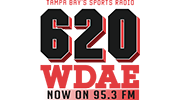Sharp vs Square: Deconstructed
The terms “sharp” and “square” are two of the most commonly used words in a bettor’s vocabulary yet they’re thrown around way too loosely. The underlying assumption, based on the very definition of the two words, is that a sharp opinion is more accurate than a square opinion. In other words, the sharp side (or number) is considered to be more successful against the spread than the square side. Many bettors exhaust themselves attempting to identify sharp versus square sides while others deem it an exercise in futility. Either way, determining which side is sharp is a rather onerous task.
One way for a novice bettor to help determine sharp versus square is to analyze line movements and bet percentages. In general, a bookmaker wants to receive roughly the same amount of action on both sides of a game (or so some would have us believe). Thus, when significant amounts of money are wagered on a particular side, the line will tend to move in that direction. Seems simple enough right? In many cases, however, the line will remain stagnant or even sometimes move in the opposite direction. When the majority of bets that are coming in are heavily weighted towards a particular side, the line can still move against that action in a phenomenon known as reverse line movement. This counter intuitive movement defies supply and demand but occurs because of a few factors:
1. The money coming in on the minority (lesser bet) is coming from bettors whose opinions the bookmaker respects (i.e. sharp money)
2. The book itself holds a contrarian view in favor of the minority side. That is, despite the large amount of money being bet on team A, the book still feels confident that team B has a higher probability of winning, thus welcomes even more action on team A to create a position.
Opposite line movement appears to contradict basic economic principles, which state that as the demand for a product increases, so should its price. However, bear in mind; betting is not a truly efficient market because every dollar isn’t created equally. If the bookmaker has good reason to believe that the general consensus is incorrect, he or she will gladly challenge anyone willing to jump on the bandwagon. In short, whether you want to deem the minority as sharp or not, savvy bettors should be aware of opposite line movements and how to identify them.
Looking at week 3 in the NFL, let’s examine the 49ers at Vikings matchup. Everyone and there mother has bet the 49ers after watching them dominate the Lions and Packers already this year. San Francisco has showcased its ability in front of two large television audiences playing like a truly elite team (Regression say what?). Now they travel to play the lowly Vikings who just lost to the Colts. Beyond the Bets published an article highlighting how, since 1989, teams that are 0-2 ATS are 52-29-1 ATS as an underdog in week 3.
This line opened at 6 and the 49ers have received almost 90% of the action. Despite all this demand for the 49ers, the line has only crept up half a point and encountered market resistance when the price hit 7. After taking down two playoff teams, this is a potential let down spot for Jim Harbaugh and company who make their 2nd road trip to the NFC central in 3 weeks. Be different and consider the unsexy home dog extremely live this Sunday.













